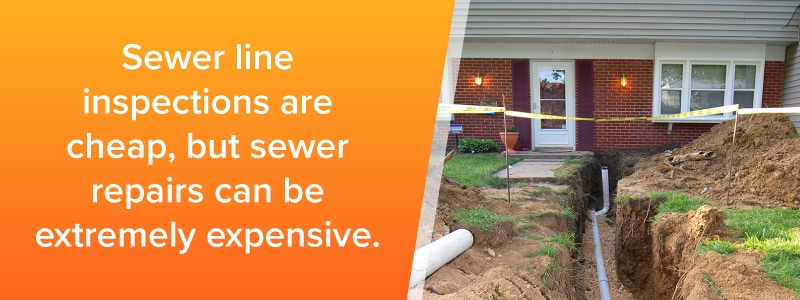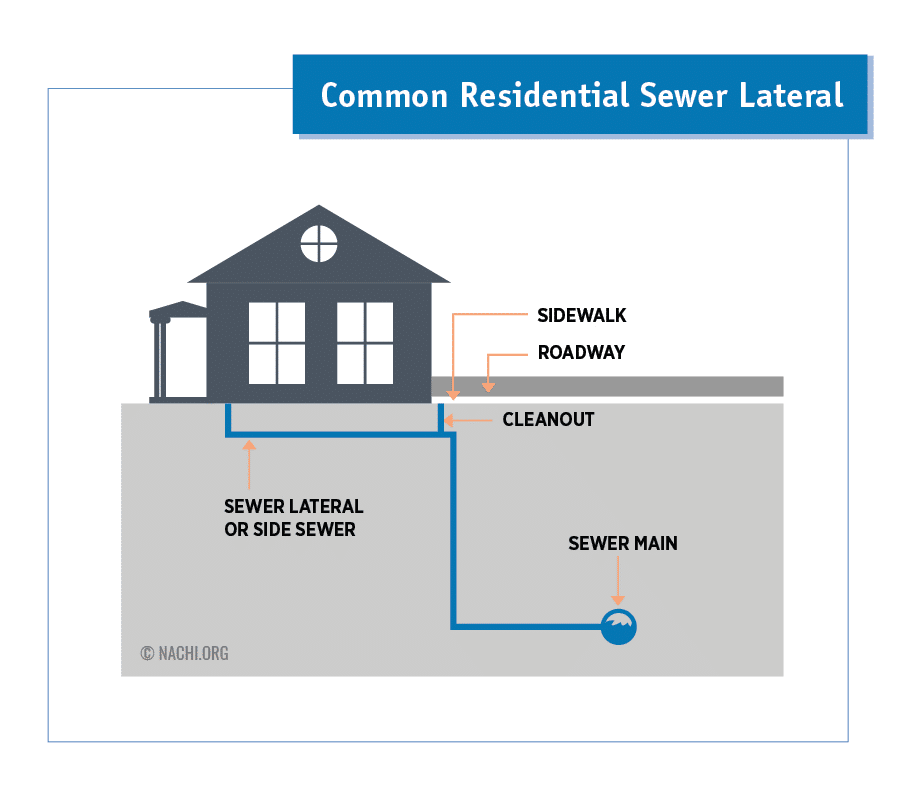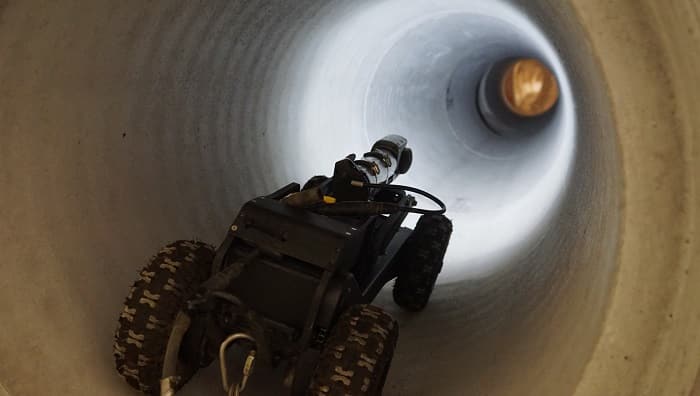Few first-time homebuyers think about sewer inspections before making a purchase. They are aware that they should have their home inspected, but sewage lines are almost an afterthought. Nonetheless, sewer inspection is one of the most critical inspections a buyer of an older home can perform because it can reveal a slew of issues with the high cost of repair. Also, lateral video sewer inspection is something one cannot overlook because it’s a prerequisite for home sales. Let’s see the processes of sewer inspection and a brief overview of Seattle sewer inspection.
What is a sewer inspection?
A camera connected to a snake line performs this inspection. The video camera tracks the condition of the sewer, showing any holes, tree roots, broken pipes, clogs, or other issues inside the sewer.
In the past, digging points were largely based on educated guesswork. Now that sewer video cameras and locating equipment are available, it’s as simple as calling a sewer video inspection and locating the block.
What Is a Video Sewer Inspection?
This is a method in which you hire a plumber or a professional to run a video line through your waste pipes.
The video could travel down your branch lines (the pipes that connect bathtubs and faucets to the house’s sewer line) or the house’s sewer line (the larger pipe that leads from the house to the municipal sewer line on the street). A camera at the end of the line allows you to see the line in close-up and real-time detail.
Read also: Sewer Scope: Inspection, Costs & How to Detect Scams
Is Video Sewer Inspection necessary?
Although this is not a common occurrence, you will need a video inspection if you intend to add a bathroom or remodel your kitchen or bathroom. Because of the increased volume of wastewater, you may want to check your sewage line to ensure that it can accommodate the increased demands.
Most homeowners, however, only hire a sewer line video inspection if there is a problem, such as a blockage that cannot be resolved with plunging, liquid drain cleaners, or sewer or drain augering.
DIY Sewer Video
Yes, but hiring a company is more cost-effective. Video inspection scopes for homeowners are much too small to inspect more than the first few feet. Furthermore, these scopes are unlikely to be auto-focusing or self-righting.
Sewer video scope inspection and locator systems operated by plumbing firms, on the other hand, will cost up to $15,000. They have powerful lights, are self-righting (the image remains upright), are high-resolution, and can record. Most significantly, these cameras have transmitters on the end that can assist the technician in locating block points.
One can get drain inspection cameras from nearby rental yards. Hiring a company for a single day’s use will be a better use of your time and resources. If you use the camera for a full week, the lower weekly rental fees would make it more affordable.
Cost of a Video Sewer Inspection
The cost of a simple sewer inspection ranges from $99 to $300. Because of older equipment, lower-cost video line inspections can produce lower-quality images. They can also connect these deals to the purchasing of more costly services; for example, you may be forced to purchase drain augering in exchange for the low cost video sewer inspection.
The national average cost of a plumbing camera inspection for a standard sewer line can range from $231 to $908. The average cost in Seattle, WA is between $370 and $1,024. The Pipe Doctor charges $250 for sewer line inspections
Rental yards will provide you with a video pipe camera and 200 feet of line per day. While this marginally costs lower than what more expensive companies will charge for a sewer inspection, the learning curve will significantly reduce your rental time.
Results of the Inspection
If you do a video inspection of the entire sewer line, you can see a “walk-through” that leads from the pit, down the sewer line, and up to any obstructions.
If the camera can get past the obstruction, it will be able to go all the way to the municipal line.
Expect nothing like a Hollywood film. Even if the resolution is high, the image will be jerky because the scope must be manually moved down the line.
Where to Dig?
A transmitter is a component of the camera unit. The video technician/plumber will bring the camera to a halt at the point of obstruction. The worker would then ascend to ground level and wave a locating device until the device detects the transmitting signal. This enables the worker to spray a paint spot at the precise point of obstruction.
We will open the drain, identify the root of the problem, report back to you on how the problem can be fixed, and have an inexpensive solution if an issue is found!

When do I have a sewer inspection performed?
When an individual is serious about purchasing a new home, they also get a sewer inspection. If your home is showing signs of a sewage backlog or if you’ve had sewer clogs in the past and want to know how your sewer is working, a sewer check is a good idea.
What a Sewer Camera Inspection isn’t capable of
Contrary to popular belief, there are limits to what a sewer camera can see inside your sewer pipes. But there is one thing that a sewer camera cannot see.
#Find Leaks
A sewer camera cannot decide if you have a leak or find a leak or leaks in your sewer lines on its own. This is so crucial that it deserves repeating.
While a sewer camera can be useful as a secondary tool in a leak detection test, you can’t use it to assess whether or not you have a leak.
Reasons a Sewer Camera Can’t Find a Leak
- Water leaving the pipe through a hole, break, or crack is referred to as a leak. Since the camera is inside the shaft, it cannot see the outside. It can’t tell if anything is leaking OUT of the pipe because it can’t see it. It can only show what is happening Within the pipe.
- The plumber is staring at a monitor that displays what the camera “sees,”. He may believe he sees something in the pipe that appears to be a hole, split, or crack. We’re talking about the sewage system. This is the location where the waste flushes and flows through. And with all that gunk and waste, it’s difficult to say whether anything is a leak based solely on what’s visible on the camera.
- Sewer pipes usually are of two materials: cast iron or PVC, both of which have thick walls. As a result, anything that appears to be a void, crack, or break is quite likely. However, since the pipe’s walls are so thick, likely, what the plumber is seeing does not extend all the way into the pipe, resulting in no water leaking out at all.
- These are years of accumulation on the walls of the pipe, especially for cast iron, but this may also be true for PVC. Calcium, soap scum, grease, or garbage accumulates on the walls of your sewer pipes. As a result, any gaps or holes that the plumber discover may very well be in the buildup rather than the pipe itself.
We estimate that approximately 95 percent of plumbing companies in the Dallas area use a camera as their primary tool for locating a leak. They come in, perform an inspection with only a sewer camera, and then inform you that you have a leak.
What can a Sewer Camera Inspection Do?
Although a sewer camera cannot detect leaks, there are certain cases in which it can be useful.
#1. Find Lines
Sewer cameras have location devices that send out signals. Our plumbers locate the camera underground by using a special signal receiver above ground.
#2. Problems with Drainage or Stoppage
This is referred to as your “sewer is not functioning as intended.”
Sewer pipes operate on the principle of gravity. When something enters the pipe—waste, garbage, water—it flows or drains down into the piping system and eventually ends up at your city’s waste management facility or septic tank, depending on your specific situation.
However, if anything is causing your device to malfunction, we will usually use a sewer camera to assess what is causing it. In cases like these, we often find stoppages, blockages, roots, mud, broken pipes, and so on.
#3. Pipe made of PVC or Cast Iron
We identify the type of device you have by inserting a sewer camera into the pipes.
#4. Connections to the Sewer System
We can see fittings, tees, and other types of connections using a sewer camera. Also, one can use it to run water from the connections. We can see where the water flows to or from and/or comes from one line to another.
Lateral Sewer Inspection
A sewer lateral is a pipe that connects a home’s or business’s plumbing to the city’s sanitary sewer system. These pipes typically run beneath the property of a house or business before connecting with a larger pipe. It is known as a sewer main, which runs underneath the street or another nearby area.
Wastewater from the home or business combines with waste from neighboring properties and travels through the main to eventually reach a wastewater treatment facility.
Because sewer laterals are owned by the property owner and there is some uncertainty about who enforces maintenance. Most times they neglect these pipes, which can lead to serious complications.

Lateral Launch Sewer Crawler Inspections
Robotic CCTV crawlers with lateral launch capabilities are ideal for performing lateral sewer inspections from the nearest manhole. These crawlers have at least two cameras. One on the main crawler body to see as you drive up the sewer main, and another satellite camera that can be launched into the adjoining lateral to provide the inspector with clear insight into its condition.
Push cameras are more commonly used when inspecting from a cleanout in the home or on the property. The equipment used is typically determined by the inspector’s access to the lateral and the number of laterals to be inspected.
Identifying Risks
The most common issues found during lateral sewer inspections are signs of inflow and infiltration (I&I). Since sanitary sewer systems are intended to only hold waste from toilets, sinks, and baths. I&I will add excess groundwater or rainwater to the system, causing an overflow and reducing the city’s treatment capacity. Sanitary sewer overflows (SSOs) can release untreated sewage into streets, parks, and bodies of water. This exposes the community to bacteria and increasing the risk of disease.
In addition to recognizing signs of I&I, sewer inspectors search for other defects in the lateral. The defects include fractures, blockages, and signs of degradation. They also inspect for cross bores, ensuring that other utilities installed with trenchless technology have not been drilled into the lateral itself. This causes structural damage, an increased likelihood of blockages. In extreme cases, there’s a risk of an explosion when a gas line cross bore is breached within a sewer lateral.
Enforcing Maintenance
Laterals can be made of clay, cast iron, or high-density polyethylene (HDPE). The latter is widely used today in sewer inspection due to its toughness and low cost. However, they can pose various risks depending on their age and content.
While sewer lateral inspections have long been ignored, they are increasingly becoming more common. This is because of the risks posed and the high cost of repair which is now more apparent. Laterals are often tested by cities until they take on a new pipe to prevent liability for one that is still in bad condition; or when a home or company experiences a backup, cities will inspect to decide who is responsible for repairs. Some cities have even developed programs to clearly outline maintenance strategies and requirements for this critical underground infrastructure.
Overview of Seattle Sewer Inspection
Sewer pipe video inspection is a groundbreaking service provided by Seattle Sewer Inspection. You no longer have to be concerned about the state of your sewage pipe or potential future issues. They use a video camera to inspect your sewer pipe and assess its state. A flexible rod is attached to a high-resolution camera, which transmits images from below to a display above.
A sewage pipe inspection provides their clients with the peace of mind of knowing that their pipes are clean. If there are issues, they prepare them with information and solutions to remedy the issue proactively.
What Are the Benefits?
Since Seattle Sewer Inspection specializes in video inspection. Their technicians will be able to provide an impartial third-party assessment of your pipes. Anyone who has had to deal with sewer problems would agree that it can be a costly and frustrating operation. Minimal root interference or pipe offsets are often perceived as the cause of costly re-piping jobs by certain plumbers, making it difficult to know who to trust. Seattle Sewer inspection can provide you with the actual state of your sewer pipes by using real-time video feeds. Seattle Sewer Inspection does not benefit from pipe replacement job contracts, so you can expect an honest and insightful experience.
If there is a significant root intrusion in the pipe, Seattle Sewer Inspection may act to provide a repair program. They can also recommend other companies to do this service.
Identifying the Problem
In addition to camera inspection, Seattle Sewer Inspection will pinpoint and mark exactly where pipe damage is in a line. This can help the inspection company quickly and easily fix the pipe without significant intrusions. They will help you save time, money, and your lawn by guiding the repair technician to the exact location of the problem.
They are a licensed and insured business that accepts Visa and Mastercard.
Can a sewer inspection prevent sewer backups?
A sewer inspection can help identify potential issues with a sewer line, such as blockages or structural damage, which can cause backups. By detecting these issues before they become major problems, a sewer inspection can help prevent sewer backups and the associated damage they can cause.
Is a sewer inspection required by law?
Whether a sewer inspection is required by law depends on the jurisdiction in which the property is located. Some localities require a sewer inspection as part of the home-buying process or for obtaining a building permit, while others do not. It is best to check with your local government or a professional inspector to determine whether a sewer inspection is required in your area.
What should you do if the sewer inspection reveals a problem?
If the sewer inspection reveals a problem, it is important to address it promptly to prevent further damage. The recommended course of action will depend on the specific issue detected, but may include repairing or replacing the sewer line, removing blockages, or fixing structural damage. A professional inspector can provide specific recommendations based on the findings of the sewer inspection.
What is the cost of a sewer inspection?
The cost of a sewer inspection varies depending on several factors, such as the size of the property, the complexity of the sewer system, and the type of inspection method used. A basic sewer inspection can cost anywhere from a few hundred dollars to several thousand dollars, while a more extensive inspection can cost even more. It is best to obtain multiple quotes from professional inspectors to get an accurate estimate of the cost of a sewer inspection for your property.
Can a sewer inspection detect leaks?
Yes, a sewer inspection can detect leaks in a sewer line. A sewer camera inspection can provide a visual of the interior of the sewer line and identify any leaks, while a pressure test can determine if there is any loss of water or air pressure in the sewer line, which can indicate a leak.
Can a sewer inspection detect clogs?
Yes, a sewer inspection can detect clogs in a sewer line. A sewer camera inspection can provide a visual of the interior of the sewer line and identify any blockages, while a pressure test can determine if there is any loss of water or air pressure in the sewer line, which can indicate a clog.
How often should a sewer inspection be performed?
The frequency of sewer inspections depends on several factors, such as the age of the sewer line, the level of use, and the presence of any potential problem areas. A sewer inspection can be performed every few years as a preventative measure, or more frequently if there are signs of a problem, such as slow drains or backed-up toilets. It is best to consult a professional inspector to determine the appropriate frequency of sewer inspections for your property.
Summary
Scheduling daily sewer lateral inspections is an essential aspects of being a homeowner. Most major problems, including spills and leaks, can be avoided with routine maintenance and cleaning.
When you decide to sell your home, your sewer lateral inspection becomes even more important. The city wants you to not only get an inspection but also pass it and obtain certification to pass on to the buyer.
Sewers, like all other parts of your house, need maintenance. However, many homeowners are unaware of their sewers or how to detect sewage issues. These commonly asked questions are intended to clear the air concerning your sewers so that you understand what a sewer inspection is and why you should get one.
- Sewer Scope: Inspection, Costs & How to Detect Scams
- Private Placement Memorandum: Complete Checklist for your financing (Updated!)
- REAL ESTATE DEVELOPMENT BUSINESS: How to become a Developer and detailed steps to start a company
- Real Estate Business: A Definitive Guide for Beginners (+ How to start tips)
- PATIO HOMES: Best Patio Home listings for Sale & Rent (+ Quick Guide)
- Hail Damage Car: Insurance claims, costs of repair (+top picks for the sales)







2 comments
I am glad that cores bores can be used to check on utilities to ensure they have not been touched. I think it would be smart to find out where your utility lines are first. Then you could plan around them accordingly.
A camera inspection is faster, more accurate, and much less disruptive than digging a hole! The whole process is safe and non-invasive, so it’s going to cause less disruption to your home and your day plumbing problems can be disruptive enough without your home being taken apart to solve them.